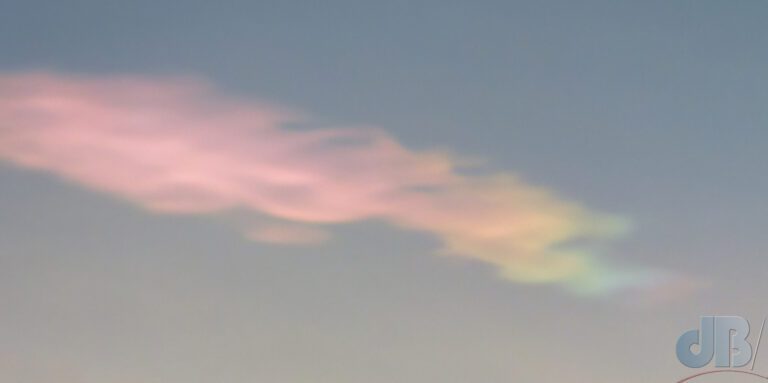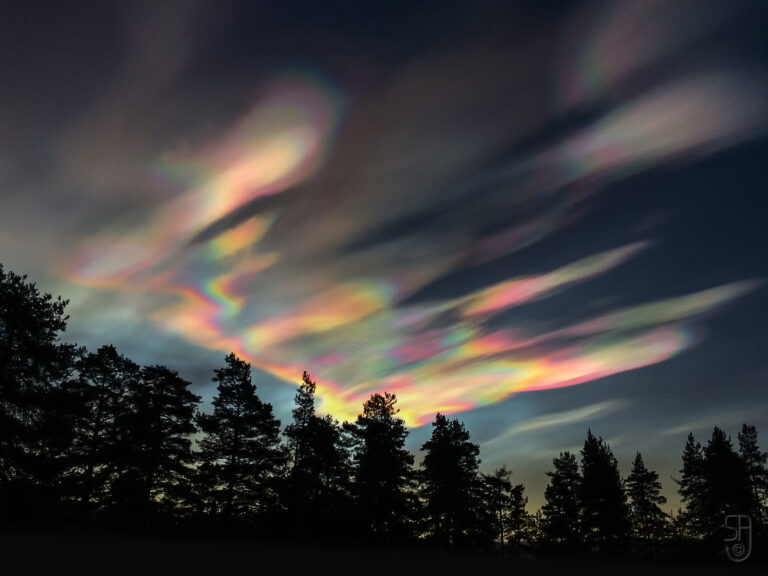My sister sent me some photos she took of pearlescent clouds that appeared at dusk over her house today. I took a look outside myself soon after and could see a couple of small patches of these colourful clouds here too. We live at least a couple of hours drive apart. There have been lots of posts on social media of some beautiful nacreous clouds this week.

The term nacreous refers to the iridescent, smooth internal sheen we see in several mollusc shells, often known as mother-of-pearl when it’s seen in oysters. The word’s etymology presumably lies in the Arabic word naqur “hunting horn”, from nakara meaning to hollow out, in reference to the shape of mollusc shells, but perhaps actual shells used as horns, such as conch shells.

Nacreous clouds are also known as polar stratospheric clouds and form in the winter polar stratosphere at altitudes of 15 to 25 kilometres where it is very cold (down to minus 78 Celsius) and dry. Indeed, clouds rarely form at this altitude because of the lack of water vapour. The clouds themselves are formed from ice crystals rather than liquid or water vapour. Under the right natural conditions, they might be seen further from the poles as has happened in the UK this week. The clouds are characterized by their vibrant and iridescent colours, including shades of pink, purple, and green. The colours show when the sun, as seen from ground level, is actually a few degrees below the horizon.
The shimmering and vibrant colours you might see result from the interference of light waves as they pass through the ice particles from which the cloud is composed. Incidentally, we could’ve been seeing the same patch of cloud given the altitudes we’re talking.
There is a second type of nacreous cloud that forms from supercooled water droplets and atmospheric nitric acid and is associated with ozone depletion.